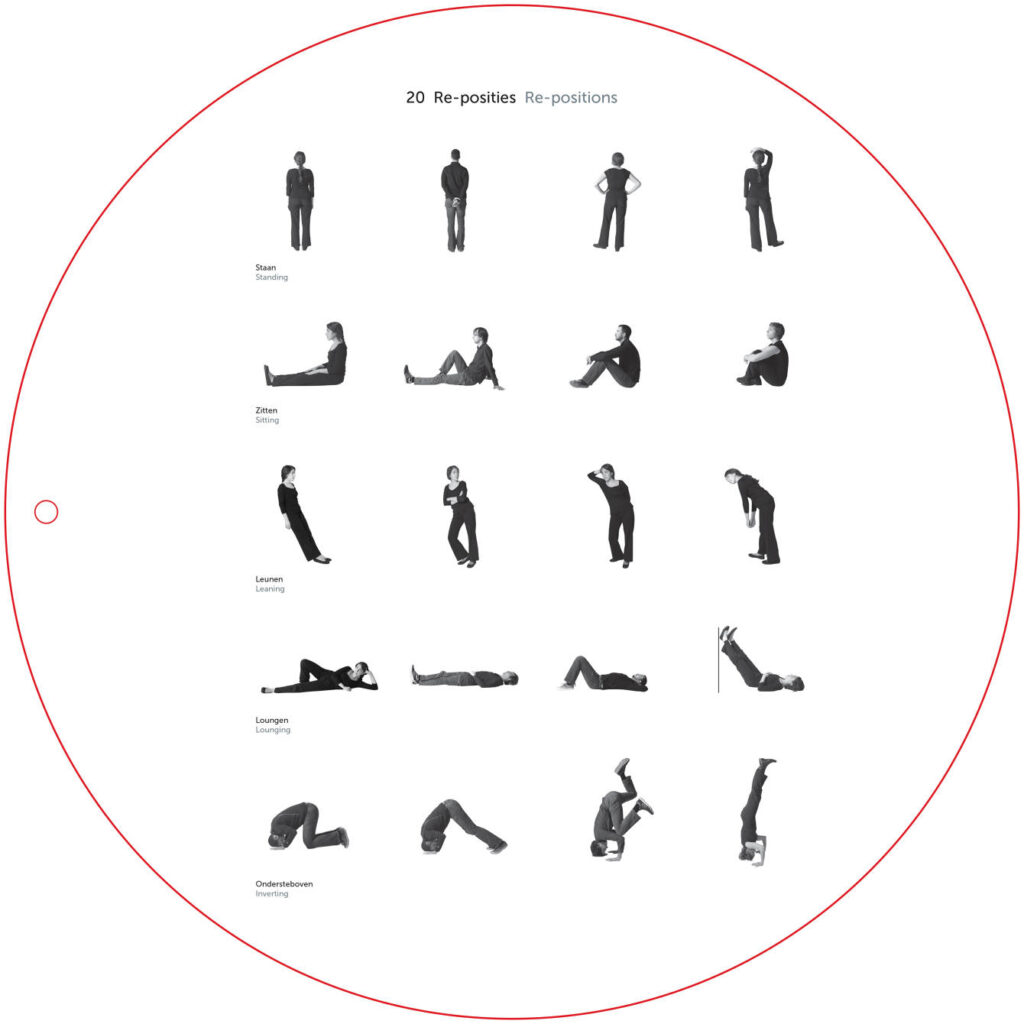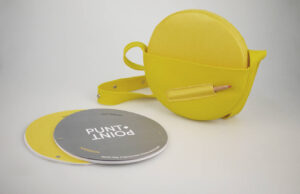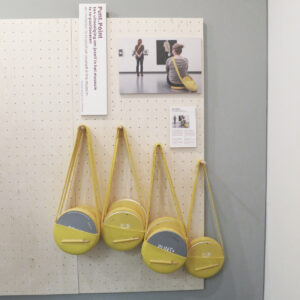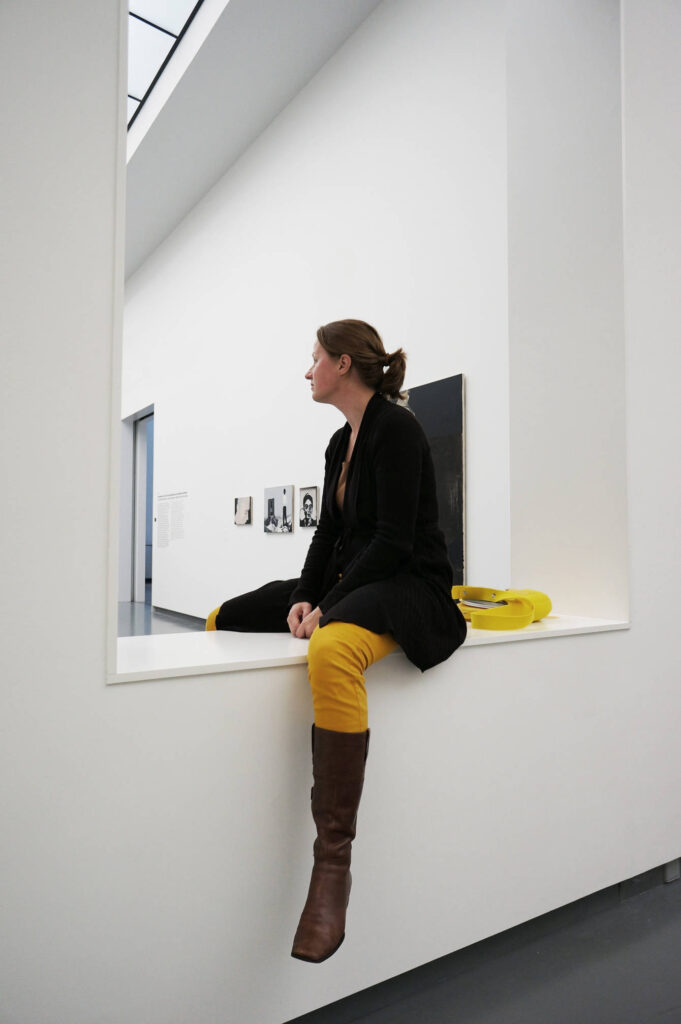
The third series of blog posts on past projects that have completed and the things I love about them. This week is Punt.Point a performance-based art work and interactive design piece by Sara Wookey in collaboration with designer Rennie Tang with design assistant Gabriela Baka. The work was installed at the Van Abbe Museum in Eindhoven the Netherlands from 2013 to 2017 as part of Storylines exhibition and is now part of the museum’s permanent collection.
This project grew out of my long time collaborative work with Rennie. An example of that progression is our project Performing the Museum: Remapping the Museum at the Hammer Museum in which we experimented with human movement and material objects as tools for re-considering how move, operate and interact in cultural, public spaces. Our interest has been in working across the disciplines of choreography, dance, architecture and design as passports to another kind of museum – one that considers the politics of inclusion and exclusion of its spaces through creative, playful, experimentally rigorous projects.
For the Van Abbe, we spent one week in the museum as ‘artists in residence’. We observed human behaviour in the museum and the performance of the everyday, as influenced by my work with the choreographer Yvonne Rainer. We drew on the work of the late urbanist Edward Soja whose worn on spatial justice came from a knowledge of ‘felt space’ or the way our bodies understand how a space feels and our position (both physically and politically) within it. We also looked at the work of William Whyte (Social Life of Small Urban Spaces) whose work on public spaces in New York City plazas showed the intelligence of human movement or what he called, ‘choreographies’.
We also observed our own allowance, as artists, afforded to us by our position in the museum space to experiment, play and try on different ways of being in the museum and of having agency. These allowances are often granted to artists working in museum yet are not necessarily available to audiences and staff who often follow a very different set of social behavioural (often invisible) rules. In our time there and through site studies we became increasingly interested in creating a tool or ‘passport’ that would invite others to engage in a creative exploration in the museum where trying on different physical postures, positions and gestures (such as sitting, leaning, lying down and/or standing on one’s head) would be invited and engaged as a way to question socio-spatial relationships and their meaning. We wanted to extend such experiences to all humans in the museum as a way to emphasize an ecological perspective, a co-creating of place that belongs to everyone.
The Key offer came from a pulling away from movement as specialised activity for consumption in the museum to an activity that helps people from both within and outside the arts realise the kind of empowerment available to them through intentional choreography by repairing (while mindfully experimenting with) the space between themselves, the institution and each other.
Working closely with Tang and Baka, we created 10 bespoke ‘pouches’ or bags that were designed to be worn by the visitor. The pouches are 10 inches in diameter and made of bright yellow felt in the shape of a circle with customized contents. The contents include a vinyl cushion and two circular books (one a guide and, the other, a notebook). The guide has a topography of images (see image above) of people performing different physical acts or ‘re-positions’. These re-positions are numbered and correspond with markers on small, yellow vinyl stickers on the floor throughout the museum to prompt certain actions in certain spaces. The notebook invites feedback on the visitors experience and communicates between users. The project was also open to staff members who, when interviewed, expressed interest in the way the pouch, when worn, opened up other possibilities for resting both during working hours and breaks, such as lying in the ground or sitting, that might otherwise not have been acceptable.
What I love about this project is the way it opened up, in a playful way, the politics of space in museums. Where and how we stand and behave in the museum is indicative of the agency, or lack thereof, we have. It speaks to the ways in which artists are granted permissions unusual to staff members and shines a light on the means of artistic practice influencing the institution and challenging it to rethink their offer as a truly inclusive one.
A podcast interview with Rennie and me about this project can be heard on XXLA by Audrey Sato– a platform featuring female architects and collaborative projects. You can listen to the interview here
References
Performing Navigations: ReMapping the Museum
Social Life of Small Urban Spaces
…



Images of Punt.Point, a project by Sara Wookey and Rennie Tang
Photos by David Kelly and Peter Cox